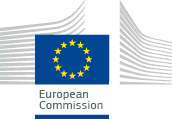PROJECT DESCRIPTION
BACKGROUND
Most of Europe’s energy is consumed by cities and urban areas, which are also the origin of most greenhouse gas (GHG) emissions. Street lighting is a key public service provided by public authorities at the local and municipal level, and it is essential for road and personal safety and overall quality of life in urban communities. As of 2014, there are more than 90 million traditional streetlights in Europe: in most European municipalities, public lighting accounts for 50% of electricity consumption and 60% of energy costs. New solutions such as solid state lighting (SSL) appear very promising because they can lead to savings of up to 50% of electricity and significantly reduce maintenance costs. Moreover, the deployment of energy saving SSL and ‘smart’ adaptive lighting technologies are important elements for sustainable and ‘smart’ cities, in line with the EU Green Paper “Lighting the Future: Accelerating the deployment of innovative lighting technologies” (COM/2011/0889), which aims for the rapid and widespread deployment of novel cost-efficient and sustainable lighting solutions.
OBJECTIVES
The main objective of the LIFE-DIADEME project was to demonstrate a new, cost-efficient street lighting dimming system that is designed to reduce energy consumption by 30% in comparison with state-of-the-art control systems. The aim was to install a distributed network of some 1 000 high-tech, low-cost sensors on a pilot basis in EUR, a residential and business district of Rome. As well as reducing street lighting energy consumption, maintenance costs, and CO2 emissions in compliance with the CEN 13201 and UNI-11248 standard on adaptive lighting, the distributed sensors network will enable the monitoring of noise, traffic and air pollution across the participating urban area. The project team planned various assessments of the new system to demonstrate its economic and environmental benefits.
RESULTS
The LIFE-DIADEME project demonstrated the benefits of an innovative adaptive public lighting system in Italy, which significantly reduces energy demand and is, at the same time, able to acquire environmental data at city level to support planning and policy-making. New cost-efficient distributed street lighting dimming systems were installed in full-scale demonstration sites in Rome, Piacenza, and Rimini.
The project team demonstrated that the adaptive DIADEME systems reduce energy consumption by 57% on average when compared to a full light system, and by almost 41% when compared to a pre-programmed system (where lighting intensity decreased according to a time schedule defined in advance on statistic basis). The technology automatically adapts the lighting intensity based on several parameters, including constantly-monitored traffic loads. The adoption of more than 19 000 systems after three years (foreseen in the project’s business plan) should reduce energy consumption and related CO2eq emissions by, respectively, 1 238 MWh/year and 496 tons/year (compared to pre-regulated systems). As the new system enhances reliability and reduces maintenance, it will consequently reduce the quantity of electronic waste produced, by 542 kg/year during the demonstration.
DIADEME systems enable the creation of reliable urban noise maps, thanks to noise sensors and an algorithm developed under other LIFE projects. The project team also demonstrated the accurate mapping of air quality at urban level, due to the installation of innovative air quality sensors and machine learning software, and data validation done in collaboration with the regional environmental authorities of the three demonstration sites. The project team demonstrated the life cycle benefits of the developed technology considering the additional components necessary to produce DIADEME systems compared to standard street lighting devices.
In the long term, the project could indirectly contribute to improvements in air quality and environmental noise. As a side effect of the lower level of street lighting, the DIADEME systems could also generate a positive impact on biodiversity, as light pollution has a negative impact on wildlife behaviour. The commitment of three participating Italian municipalities to make the lighting system sustainable will ensure the long-term environmental benefits of the project.
The project contributed to implementing energy efficiency (Directive 2012/27/EU as amended by EU 2018/2002) and green public procurement legislation (Directive 2014/24/EU and national regulation). It also contributed to the following EU policies: Europe 2030 Energy strategy; Green Paper "Lighting the Future" (COM(2011)0889) towards the reduction energy use of lighting by 20% by 2020; EU Strategy on adaptation to climate change (COM(2013)216); Mayors Adapt initiative; Directive 2011/65/EU (Restriction of Hazardous Substances in Electrical and Electronic Equipment); Directive 2012/19/EU on WEEE (Waste Electric and Electronic Equipment); Directive 2002/49/EC on assessment and management of environmental noise; and Directive 2008/50/EC on air quality.
The results confirmed that the DIADEME system can significantly contribute to reduce the electricity bill of municipalities (where 50% of the amount is due to public lighting). The Life Cycle Cost assessment showed that the economic benefits of the technology (energy saving and reduced maintenance costs) allow a return of investment in less than three years, and in ideal conditions - if the system is added to existing lighting poles - the payback time is around two years.
Coordinating beneficiary Reverberi Enetec plans to increase its turnover thanks to the new DIADEME technology; the target is to complete 200 000 installations in the 10 years after the project end. The R&D and marketing investments done (and expected) in the technology should payback in three years (2023) and generate a ten years profit of 2 million euros.
Further information on the project can be found in the project's layman report (see "Read more" section).

